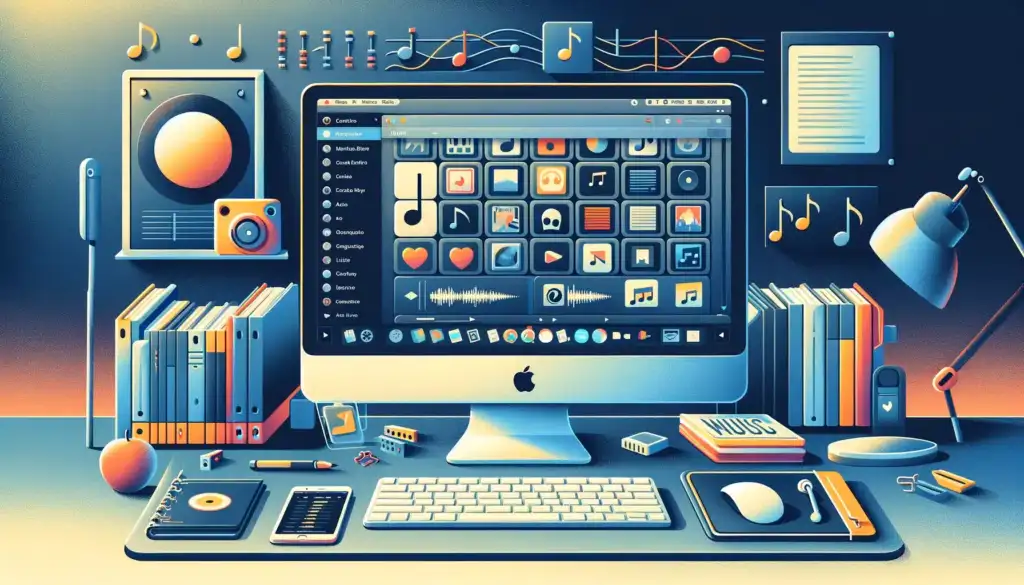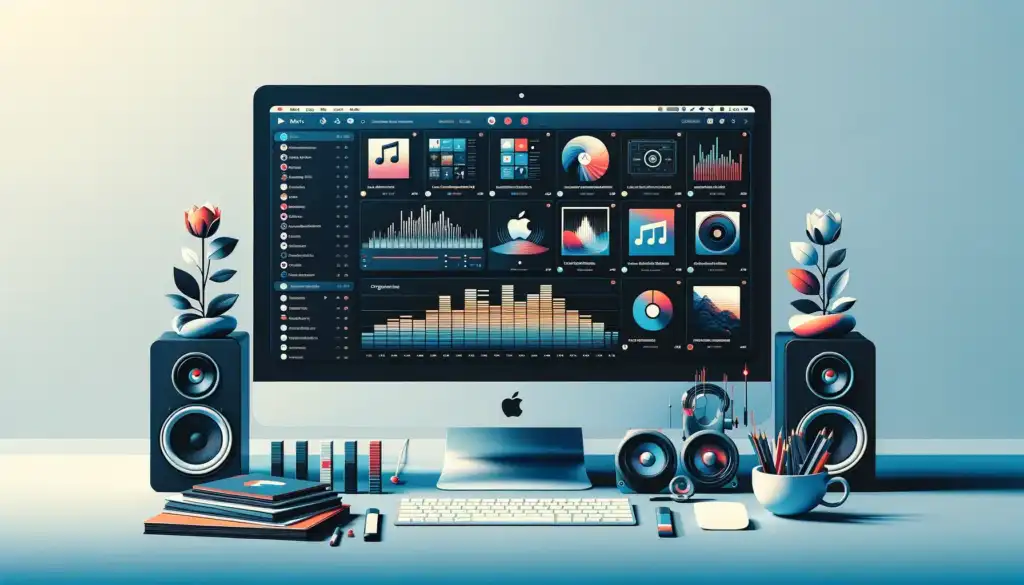Table of Contents
Managing music libraries on a Mac involves a seamless interplay between the native Music app and the extensive capabilities of Apple Music. Mac users have the advantage of a robust platform for their audio content, where they can conveniently organize, access, and enjoy their collections. The Music app, previously known as iTunes, has been the central hub for listeners to compile and curate their personal selections of songs and albums, offering both simplicity and depth in music management.
The integration of Apple Music into the Music app provides Mac users with an enriched experience, combining personal libraries with a vast streaming inventory. Subscribers can synchronize their libraries across all devices, ensuring their favorite tracks are always at their fingertips. This synchronization is a cornerstone of the Apple ecosystem, emphasizing accessibility and a unified library, whether the music is purchased, imported or streamed.
For those with extensive or multiple music libraries, the Music app on a Mac facilitates library management with ease. Users can create and switch between libraries, which is particularly useful for keeping different types of audio content organized or separating personal and professional collections. Understanding how to effectively manage these libraries allows users to maintain an organized and up-to-date music environment, tailored to their listening preferences and habits.
Setting Up Music Libraries on Mac
Managing music libraries on a Mac involves specifying locations, handling multiple libraries, and adding content. Users have flexibility and control over their music experience using the Music app—formerly known as iTunes.
Choosing a Music Library Location
Users can specify the Music Media folder location in the Music app. This is done by opening the Music app, selecting Music > Preferences, and then clicking on the Files tab. Here, one has the option to change the location where the music files are stored on their computer. It’s vital to choose a location with sufficient space to grow the media library.
Creating Multiple Music Libraries
To create multiple music libraries, one must close the Music app and then reopen it while holding the Option key. This allows the user to either choose a library or create a new library. Different libraries can contain unique settings, such as different playlists or accounts. This is particularly useful for those who want to separate music by genre, language, or other criteria, or to share a computer with multiple users.
Importing Music from Various Sources
The Music app allows users to import music from various sources, such as CDs, the iTunes Store, or through direct downloads from the web. For those interested in expanding their collection, learning how to download music on mac provides additional ways to enrich your library. To import from a CD, insert it into the computer and use the Music app to add the tracks to the library. Music can be downloaded from the internet and added to the library by simply dragging the files into the Music app. Preferences can be adjusted to organize the library and ensure all music files are copied into the chosen Music Media folder.

Organizing Your Music Content
Maintaining an organized music library ensures that one can easily access and enjoy their collection without the frustration of navigating through a cluttered assortment of files. Effective management includes arranging playlists and albums, updating track information, and tidying up duplicates and unidentified files.
Managing Playlists and Albums
In the Music app on a Mac, users can create and modify playlists to categorize their songs in a way that suits their listening preferences. For instance, one might keep a separate playlist for holiday music or arrange albums by artists. Playlists can be managed by selecting Songs in the sidebar and using the File menu to create or edit a playlist. If music needs to be added from the local storage into the Music app, users can simply drag and drop the files or use File > Add to Library.
Editing Track Information and Tags
Accurate track information and tags are imperative for the efficient organization of music files. The user can right-click a song in the Music app and select Get Info to edit metadata like the artist’s name, album title, and genre. MusicBrainz Picard is a third-party tool that can help automate the tagging process, ensuring metadata consistency across the library. This feature proves invaluable for maintaining a well-organized music collection, where every file’s information is accurately presented for easy sorting and searching.
Dealing with Duplicate and Unnamed Files
Duplicates create clutter and consume unnecessary space. The Music app provides a feature under File > Library to show duplicate items so that one can manually review and delete them. For unnamed files or incomplete tags, using a Bulk Rename Utility allows batch editing of file names directly in the Finder. This ensures a user can quickly identify songs and maintain a tidy library. Feedback from the music app helps tag these unnamed files by comparing them to existing music databases and retrieving the correct information if available.
By following these practices, one can ensure a well-structured and easily navigable music library on their Mac.
Enhancing Music Library Features
Managing a music library on a Mac involves not just organizing tracks but also enhancing the library’s features to ensure a rich and engaging user experience. This includes adding refinements such as high-quality album art and handling compilations correctly, as well as taking advantage of Apple’s integrated services for a seamless listening experience.
Adding Album Artwork and Compilations
Album artwork is essential for the visual identification of music and enhances the browsing experience. Users can manually add artwork to their music files by simply dragging JPEG or PNG images onto the album or track in question within the Music app. This is particularly useful for files such as FLAC, MP3, and WAV, which may not automatically have artwork attached.
Compilations, which are collections of songs often from various artists, require special attention to prevent fragmentation in the library. Users must ensure that compilation albums are correctly marked when importing or editing album information to keep these tracks grouped together.
Integrating with Apple Services
The Music app on a Mac readily integrates with various Apple services, facilitating a connected and synchronized experience across devices. By signing in with their Apple ID, users can access Apple Music, the iTunes Store, and other streaming services. Subscribers can make use of iCloud Music Library to sync their music across all devices, ensuring availability of their library wherever they go, and save local storage space on individual devices.
To make full use of these services, users need a valid subscription and must enable Sync Library in the Music app settings. Songs purchased from the iTunes Store or added to the library from Apple Music are available in high-quality AAC format, which provides a balance between sound fidelity and storage use.













